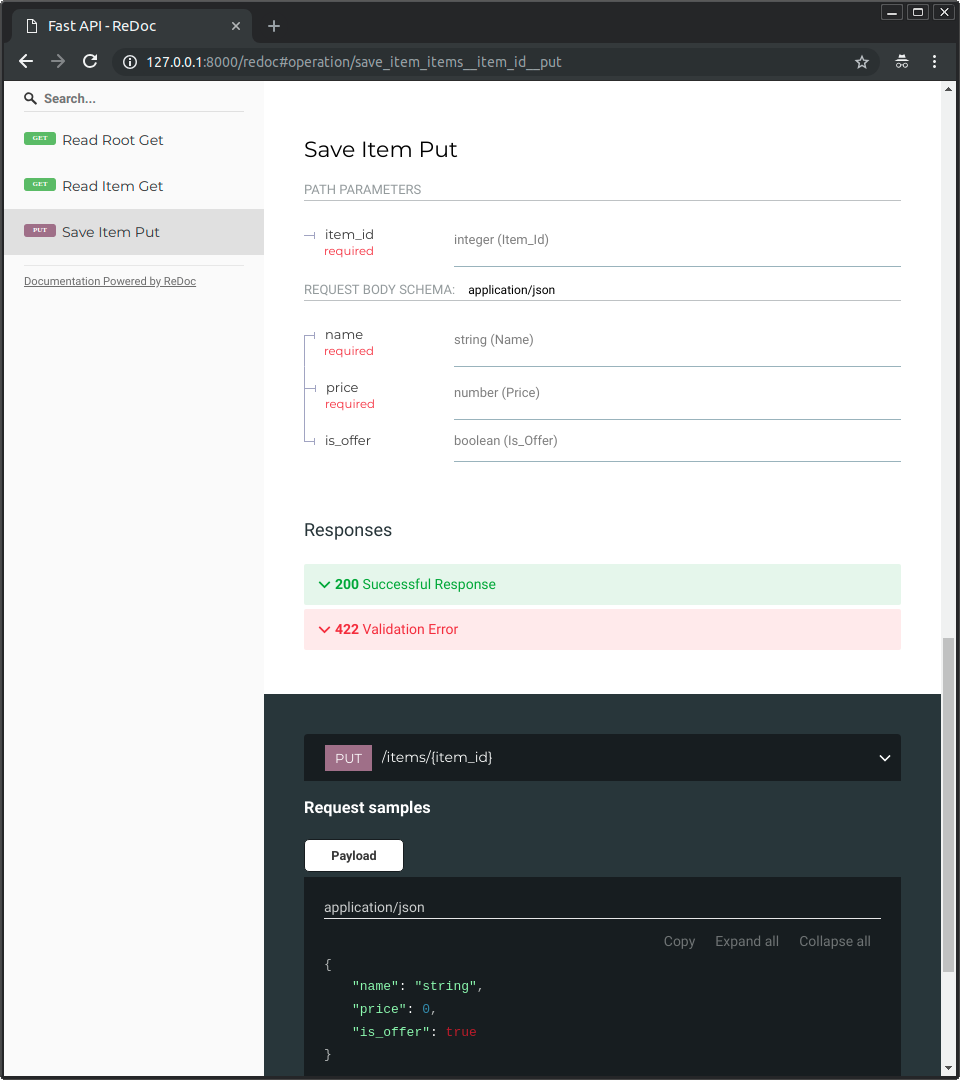- Sort Score
- Result 10 results
- Languages All
Results 31 - 40 of 6,856 for You (0.09 sec)
-
docs/docker/README.md
To use Docker commands on a specific container, you need to know the `Container ID` for that container. To get the `Container ID`, run ```sh docker ps -a ``` `-a` flag makes sure you get all the containers (Created, Running, Exited). Then identify the `Container ID` from the output. ### Starting and Stopping Containers
Registered: Sun Sep 07 19:28:11 UTC 2025 - Last Modified: Tue Aug 12 18:20:36 UTC 2025 - 8.2K bytes - Viewed (0) -
docs/en/docs/advanced/sub-applications.md
# Sub Applications - Mounts { #sub-applications-mounts } If you need to have two independent FastAPI applications, with their own independent OpenAPI and their own docs UIs, you can have a main app and "mount" one (or more) sub-application(s). ## Mounting a **FastAPI** application { #mounting-a-fastapi-application }Registered: Sun Sep 07 07:19:17 UTC 2025 - Last Modified: Sun Aug 31 09:15:41 UTC 2025 - 3K bytes - Viewed (0) -
README.md
 ### Recap { #recap } In summary, you declare **once** the types of parameters, body, etc. as function parameters. You do that with standard modern Python types. You don't have to learn a new syntax, the methods or classes of a specific library, etc. Just standard **Python**. For example, for an `int`:Registered: Sun Sep 07 07:19:17 UTC 2025 - Last Modified: Sun Aug 31 15:19:49 UTC 2025 - 24.3K bytes - Viewed (0) -
.github/ISSUE_TEMPLATE/feature_enhancement_request.yaml
- type: textarea attributes: label: API(s) description: Which existing classes or methods do you want to improve? placeholder: e.g., `com.google.common.collect.ImmutableList::of` render: java validations: required: true - type: textarea attributes: label: How do you want it to be improved? validations: required: true - type: textarea attributes:Registered: Fri Sep 05 12:43:10 UTC 2025 - Last Modified: Fri Nov 17 18:47:47 UTC 2023 - 3.9K bytes - Viewed (0) -
docs/en/docs/reference/exceptions.md
# Exceptions - `HTTPException` and `WebSocketException` These are the exceptions that you can raise to show errors to the client. When you raise an exception, as would happen with normal Python, the rest of the execution is aborted. This way you can raise these exceptions from anywhere in the code to abort a request and show the error to the client. You can use: * `HTTPException` * `WebSocketException`
Registered: Sun Sep 07 07:19:17 UTC 2025 - Last Modified: Thu Apr 18 19:53:19 UTC 2024 - 597 bytes - Viewed (0) -
docs/bucket/versioning/README.md
management](https://github.com/minio/minio/blob/master/docs/bucket/lifecycle/README.md). If you have an object expiration lifecycle policy in your non-versioned bucket and you want to maintain the same permanent delete behavior when on versioning-enabled bucket, you must add a noncurrent expiration policy. The noncurrent expiration lifecycle policy will manage the deletes of the noncurrent object versions in the versioning-enabled bucket. (A version-enabled bucket maintains one current and zero or more...
Registered: Sun Sep 07 19:28:11 UTC 2025 - Last Modified: Tue Aug 12 18:20:36 UTC 2025 - 12K bytes - Viewed (0) -
.github/ISSUE_TEMPLATE/03-gopls.yml
attributes: label: "What did you see happen?" validations: required: true - type: textarea id: expected-behavior attributes: label: "What did you expect to see?" validations: required: true - type: textarea id: editor-and-settings attributes: label: "Editor and settings"Registered: Tue Sep 09 11:13:09 UTC 2025 - Last Modified: Fri May 24 17:09:04 UTC 2024 - 1.8K bytes - Viewed (0) -
.github/ISSUE_TEMPLATE.md
<!--- reproduce this bug. Include code to reproduce, if relevant --> <!--- and make sure you have followed https://github.com/minio/minio/tree/release/docs/debugging to capture relevant logs --> 1. 2. 3. 4. ## Context <!--- How has this issue affected you? What are you trying to accomplish? --> <!--- Providing context helps us come up with a solution that is most useful in the real world -->
Registered: Sun Sep 07 19:28:11 UTC 2025 - Last Modified: Sat Jan 29 00:04:16 UTC 2022 - 2K bytes - Viewed (0) -
docs/en/docs/tutorial/cors.md
## Use `CORSMiddleware` { #use-corsmiddleware } You can configure it in your **FastAPI** application using the `CORSMiddleware`. * Import `CORSMiddleware`. * Create a list of allowed origins (as strings). * Add it as a "middleware" to your **FastAPI** application. You can also specify whether your backend allows: * Credentials (Authorization headers, Cookies, etc).Registered: Sun Sep 07 07:19:17 UTC 2025 - Last Modified: Sun Aug 31 09:15:41 UTC 2025 - 5.5K bytes - Viewed (0) -
docs/en/docs/how-to/custom-request-and-route.md
In some cases, you may want to override the logic used by the `Request` and `APIRoute` classes. In particular, this may be a good alternative to logic in a middleware. For example, if you want to read or manipulate the request body before it is processed by your application. /// danger This is an "advanced" feature. If you are just starting with **FastAPI** you might want to skip this section. ///
Registered: Sun Sep 07 07:19:17 UTC 2025 - Last Modified: Sun Aug 31 09:15:41 UTC 2025 - 4.6K bytes - Viewed (0)